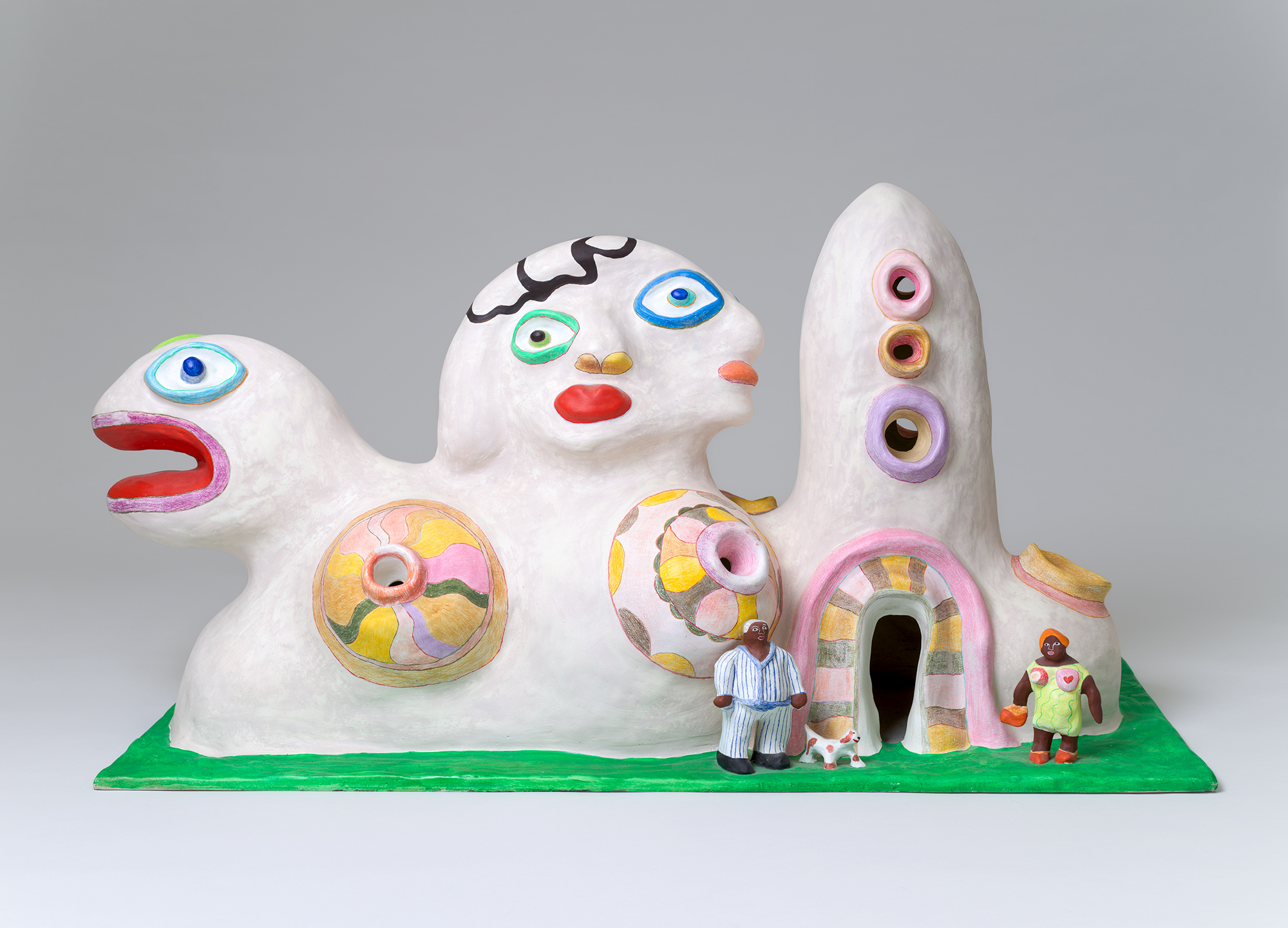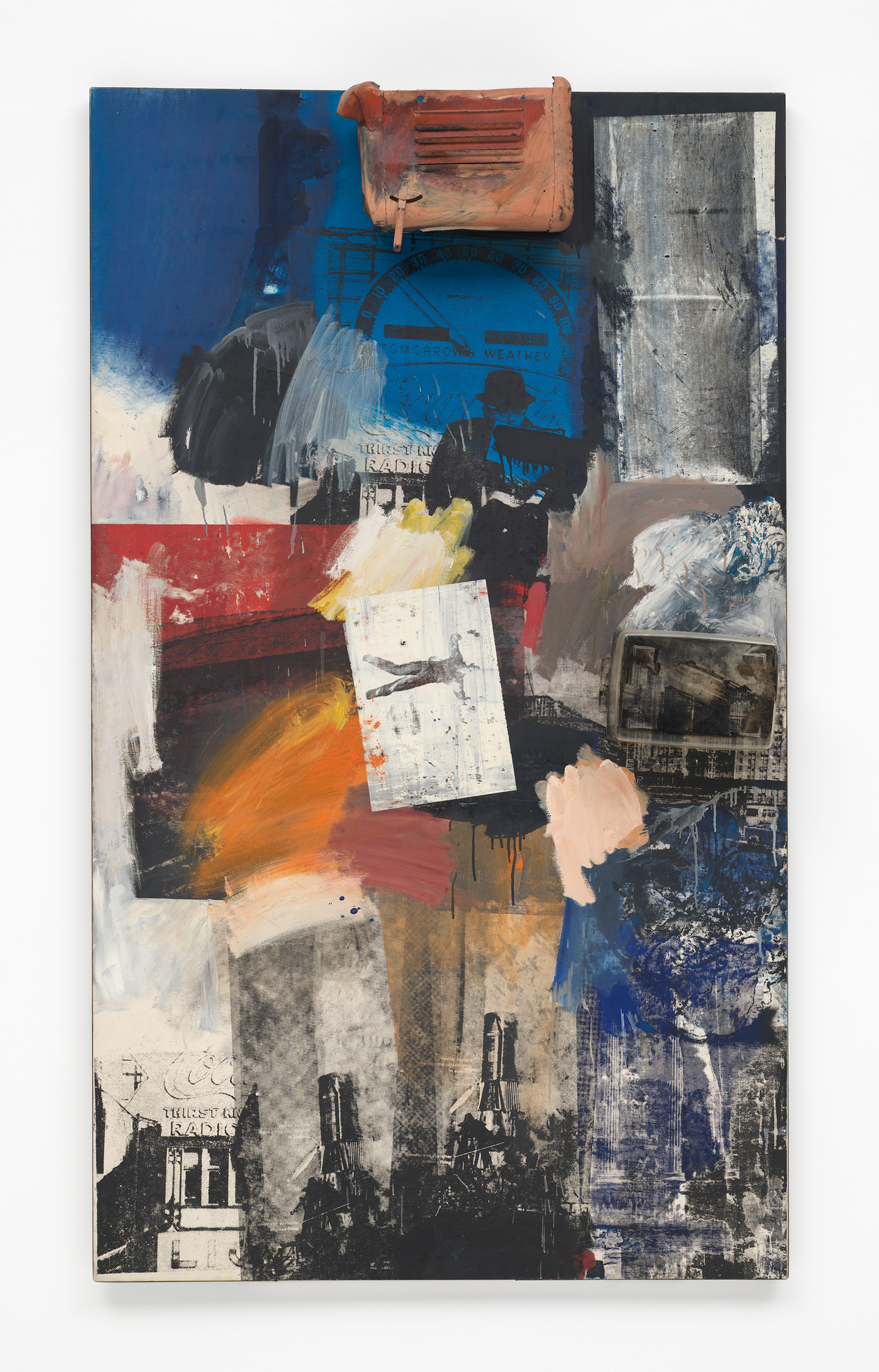202 Gallery
According to critic and curator Lawrence Alloway, the artists of the Pop art movement in the 1960s drew inspiration from popular culture, or “the communications network and the physical environment of the city.” Their approach to these forces and the resulting artworks are often tinged with a sense of irony. Pop artists also drew on the history of the Dada art movement in their wide-ranging practices. Like Pop art, Dada satirically incorporated everyday objects and activities as instruments of social and aesthetic critique.
A forerunner of the Pop art movement in the United States, Robert Rauschenberg’s assemblages and paintings incorporate found objects, particularly universally available materials such as cardboard, plastics, and scrap metal, as well as mundane imagery applied by transfer techniques or commercial silkscreen processes. During the early 1960s, Jim Dine and Claes Oldenburg were part of a group of artists who extended the gestural and subjective implications of Abstract Expressionist painting into performances known as Happenings. Combining dance, visual art, music, and poetry, these events ranged from faux dinner parties and illogical ceremonies to fictional storefronts selling absurd objects meant to critique society’s celebration of mass consumption. Later, Oldenburg created large-scale sculptures and projects (an example of which can be seen elsewhere on this floor) with the collaboration of Coosje van Bruggen, whom he married in 1977. Artists beyond Britain and the United States—Sigmar Polke from Germany, Mimmo Rotella from Italy, Niki de Saint Phalle from France, Colombian-born Miguel Ángel Cárdenas—also explored a Pop-related style, referred to in other countries as Capitalist Realism or Nouveau Réalisme, that interrogated aesthetic conventions such as the assumed originality of so-called high art.
Contemporary artists such as Jose Dávila and Lucía Hierro extend the legacy of Pop art in works that critique consumer culture, strategically incorporating Mexican and Dominican-American references that reflect each artist’s own heritage. Dávila references the stacked sculptures of Minimalist artist Donald Judd as well as Rauschenberg and Andy Warhol’s use of common cardboard boxes and commercial packaging to create poignant ruminations on the way artworks are consumed. Hierro elevates the status of banal objects with her oversized renderings of objects commonly found in local Latin-American markets, raising issues of cultural identity, capitalism, and class.


